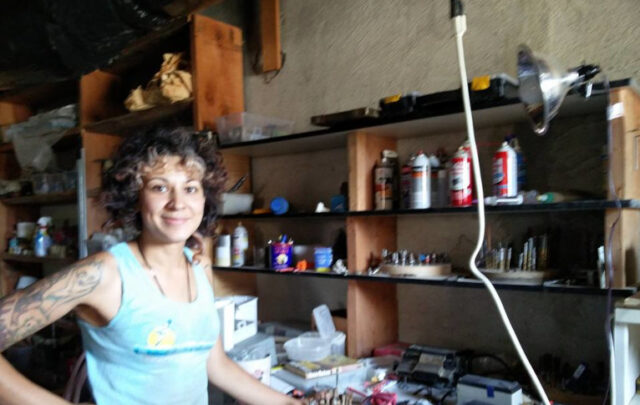
Update: This comment thread on reddit for the podcast episode is red hot right now.
This is an excerpt from this week’s podcast where I argue that permaculture is failing.
Sustainable agriculture faces a crisis. In many ways this crisis reflects the broader social and economic breakdown crisis that American families are facing today: economic hardship, social inequality, environmental degradation…all of these are reflected in 21st century agriculture. So now reader, I ask you these questions: Why did you get interested in organics, permaculture, and sustainable agriculture in the first place? Was it because you felt you could be a part of transitioning agriculture into a new and sustainable model? Or because you romanticized about the agrarian traditions and lifestyles of a bygone era? Was it to prove a point, that there is a better way?
Or perhaps you were born into a farming family, and wanted to carry on the legacy, like Kasha Bialas. Bialas describes the life of the 21st century American small-holder:
I’m a single mom with a fifth grader to wrangle and I spend the bulk of my early morning and evening hours at the computer organizing our CSA farm share program, developing newsletters, making website changes, creating advertising fliers and recipe handouts, and occasionally doing the mom thing. My days are spent doing all manner of farm work.
I will also ask you this: Do you think we are winning? Does the portrait Kasha paints, of lone crusader, struggling to keep her head above water, sound to you like a movement triumphant? Let me draw your attention once again to last week’s episode of Agroinnovations with Dr. Joe Kovach. While Dr. Kovach has demonstrated the possibility of earning $90,000/acre on a small scale, this demonstration comes with a number of critical caveats that Kovach himself identifies in the course of the interview. I have summarized them here for you:
- The price discovery mechanism in the farmer’s markets conveys a marketplace of small producers competing with, and undercutting, one another instead of competing with supermarkets and industrial agriculture.
- Kovach also states: “I don’t see how anyone makes any money in a farmer’s market.” He attributes this to very low sales volume relative to production and retail labor.
- Some of the techniques he describes, like season extension, increase profitability for the individual farmer through offering normally non-available produce during certain times of the years at higher prices. Yet this competitive advantage evaporates when others adopt similar practices. In other words, individual tactical advantages do not necessarily translate to a viable alternative business models for the sustainable farming movement. Again, this is intra-movement competition.
- Finally, Kovach says: “It’s a lot of work [to set up a polyculture like this]. The work is the deterrent. The other major deterrent is you cannot compete with the major grocery stores. Because our economies of scale and our agricultural system is so efficient, you can’t use polyculture to feed commodity buyers. You can’t do this on 5 or 10 acres. It’s tough to do it on an acre. But it’s also tough to compete with cheap oil. You can’t compete on price until gas skyrockets, which it may sometime, but now that is what makes it tough to market.”
To be sure, I have great respect for Dr. Kovach and many others who are helping to show us the way. Nevertheless, these constraints, and the many others that I have shared with you today, paint a bleak picture indeed for the future of sustainable food. I ask you to consider the possibility that the permaculture movement is failing. The reason for this failure is that we have focused all of our energy on biological production techniques, many and most of which are sound, effective, and replicable, yet we have done so on top of a broken socio-economic model. If permaculture, or holistic management, or biodynamics, or any other such production or even decision-focused technique, was so effective, why then do we hear story after story of young farmer’s struggling, going into debt, working ungodly hours day after day, year after year? The only people with any peace of mind are those who have made some enormous sum of money in other endeveavours and have adopted farming as a lifestyle or a hobby, or the rock-star Salatin’s of the world who make a good portion of their money on speaking tours and books.
I write this not to be discouraging or defeatist, but to impress upon you that it is time we started creating the socio-economic models that will make permaculture successful. We have many options at our disposal, including worker-owned cooperatives, labor unions, and collective bargaining agreements. It is probably fair to say some of these models have yet to be created. I do believe that permaculture could one day provide a substantial portion of our food supply, but only if and when we begin to work together collectively. The model of the rugged individual crusader, working her farm into the late hours of the evening, needs to be abandoned, as it has proven to be unmanageable and ironically enough, unsustainable. In its place, we must forge a new model of collective democratic action.
Photo credit: The Farm Girl Cooks.





